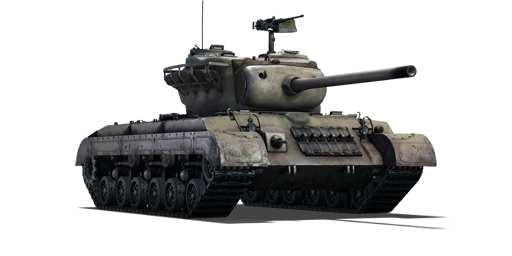As the US Ordnance Department developed the T23 medium tank and received approval in May 1943 to produce 250 tanks, 50 were requested to be upgunned with the new 90 mm T7 gun, with the 90 mm-equipped T23 being designated "T25". Concepts were developed by converting two T23 tanks into the T25 standard and these tanks were delivered for testing on 21 January 1944. Tested alongside a version with a torqmatic transmission, the T25E1, as well as an uparmoured version, the T26(E1), the T25 was determined not suitable due to the complicated electric transmission that also made the tank too heavy. The T25E1 and T26E1 with the torqmatic transmission were selected for further production and evaluation. By the summer of 1944, the T25 and T25E1 were cancelled as combat experience in Europe had shifted interest to the more heavily armoured T26E1, which would be further developed into the T26E3 and then standardized as the M26.
Introduced Update 1.53 "Firestorm", the T25 is akin to a smaller M26, featuring the same armament and engine in a smaller package. Despite its smaller profile, reduced armour, and lighter weight, the T25's mobility is about the same as the M26. As such, gameplay between the T25 and M26 is very similar, if only that the T25 is less likely to block incoming enemy shells compared to the M26. The 90 mm gun may not be able to easily deal with the heaviest armoured enemies that the T25 can meet but using its small size and manoeuvrability to get around the enemy, any tank that gets penetrated by the 90 mm M82 APCBC round will very likely be instantly destroyed by the post-penetration impact.















